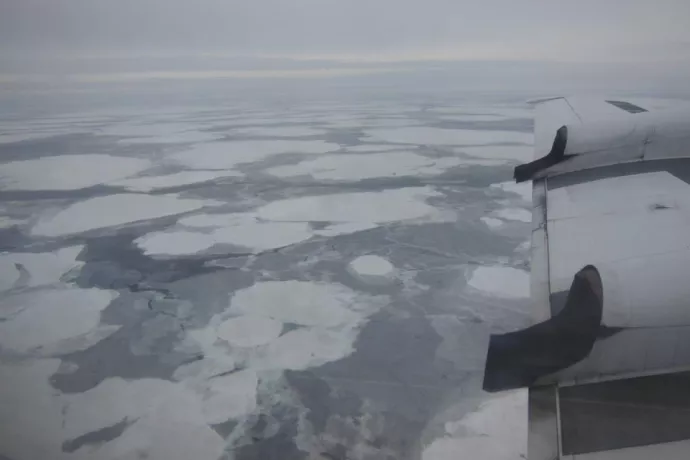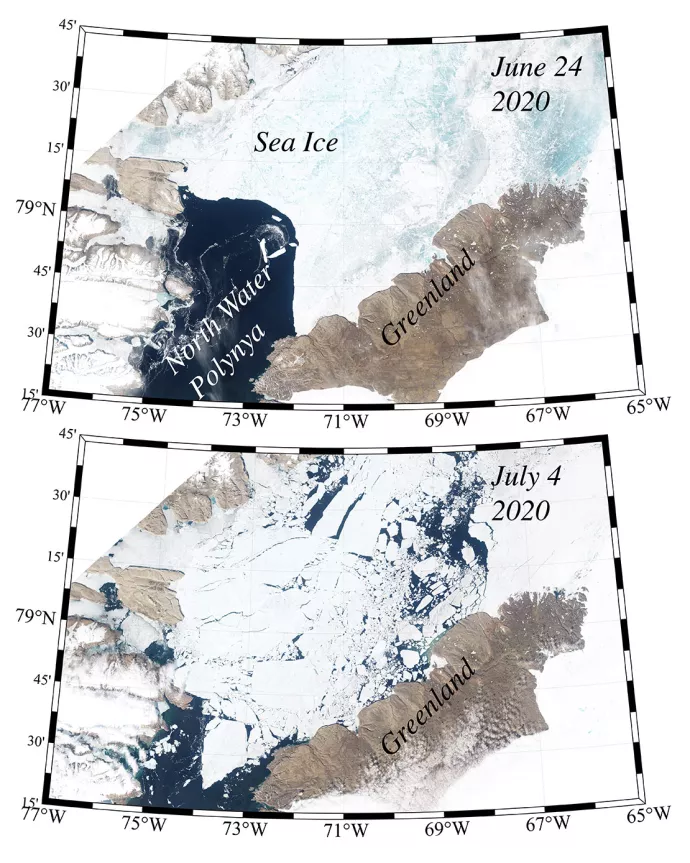
Ice arches holding back Arctic's ‘Last Ice Area’ might soon let go, UTM research shows
Snugged up against the upper edges of the Canadian Arctic Archipelago and Greenland, lies the oldest and thickest sea ice in the world. This ice covers hundreds of thousands of square kilometres of Arctic Ocean. Arctic sea ice grows and shrinks with the seasons, but this ice, its frozen heart, has so far lasted even through the warmest summers on record.
Scientists call this region “The Last Ice Area.” They think it could endure even after the rest of the Arctic becomes ice-free in the warmer months. It could provide a vital refuge for polar bears, walruses, and other species that rely on sea ice to survive.
“This very old ice is what we’re concerned about. The hope is that this area will persist into the middle part of this century or even longer. And then hopefully, eventually, we'll be able to cool the planet down. The ice will start growing again, and then this area can act as a sort of seed,” says Kent Moore, a professor of physics at the University of Toronto Mississauga.

But Moore’s recent research indicates the Last Ice Area may be in more peril than people thought. In a recent paper published on Jan. 4, 2021 in the journal Nature Communications, Moore and his co-authors describe how this multi-year ice is at risk not just of melting in place, but of floating southward into warmer regions. This would create an “ice deficit” and hasten the disappearance of the Last Ice Area.
Using satellite data, Moore has been studying “ice arches” that form along Nares Strait, a 40-kilometre-wide 600-kilometre-long channel that runs between Greenland and Ellesmere Island from the Arctic Ocean in the north, into Baffin Bay further south.
Moore had already seen warning trends in earlier research, which indicated this ice is increasingly on the move.
“The Last Ice Area is losing ice mass at twice the rate of the entire Arctic,” Moore said. “We realized this area may not be as stable as people think.”
His most recent analysis of satellite data says this problem may be getting even worse. The arches along Nares Strait that historically have held the Last ice Area in place have become less stable.
“The ice arches that usually develop at the northern and southern ends of Nares Strait play an
important role in modulating the export of Arctic Ocean multi-year sea ice,” he and his authors write. “The duration of arch formation has decreased over the past 20 years, while the mass of ice exported through Nares Strait has increased.”
These arches form as the weather cools. Multiple ice floes converge as they funnel into the relatively narrow strait. They form into huge structures, like bridge supports turned on their sides, spanning the full width of the passage and blocking the movement of multi-year ice from north to south.
“It's really quite profound to imagine a 100-kilometre-long barrier of ice that remains stationary for months at a time. That's more than twice as long as Louisiana’s Lake Pontchartrain Causeway — the world’s longest continuous bridge over water,” Moore says. “It speaks to the strength of ice.”
But that strength is diminishing. Ice arches only form for part of the year. When they break up in the spring, ice moves more freely down the Nares Strait. And that breakup is happening sooner and sooner.
“Every year, the reduction in duration is about one week. They used to persist for about 200 days, and now they’re persisting for about 150 days,” Moore says. “There’s quite a remarkable reduction. We think that it’s related to the fact the ice is just thinner and thinner ice is less stable.”
The impact of losing the Last Ice Area would extend beyond photogenic species like polar bears. Below the ice and in brine channels that run through its cracks and fissures, ice algae flourishes, supplying carbon, oxygen, and nutrients that underpin an elaborate, vulnerable and unique food web.
In 2019, the Canadian government designated a section of the Last Ice Area as the Tuvaijuittuq Marine Protected Area. Tuvaijuittuq is Inuktut for “the place where the ice never melts.” Moore remains hopeful that his new analysis of the Nares Strait ice arches will focus attention on this important region of the Arctic.
He says action targeted specifically at preserving the arches wouldn’t be sufficient to solve the problem. Preserving the Last Ice Area demands a more global solution.
“The scale is so huge and the region is so remote. The only thing we can do is cool the planet down. Then the arches will hopefully naturally form again,” he says.
